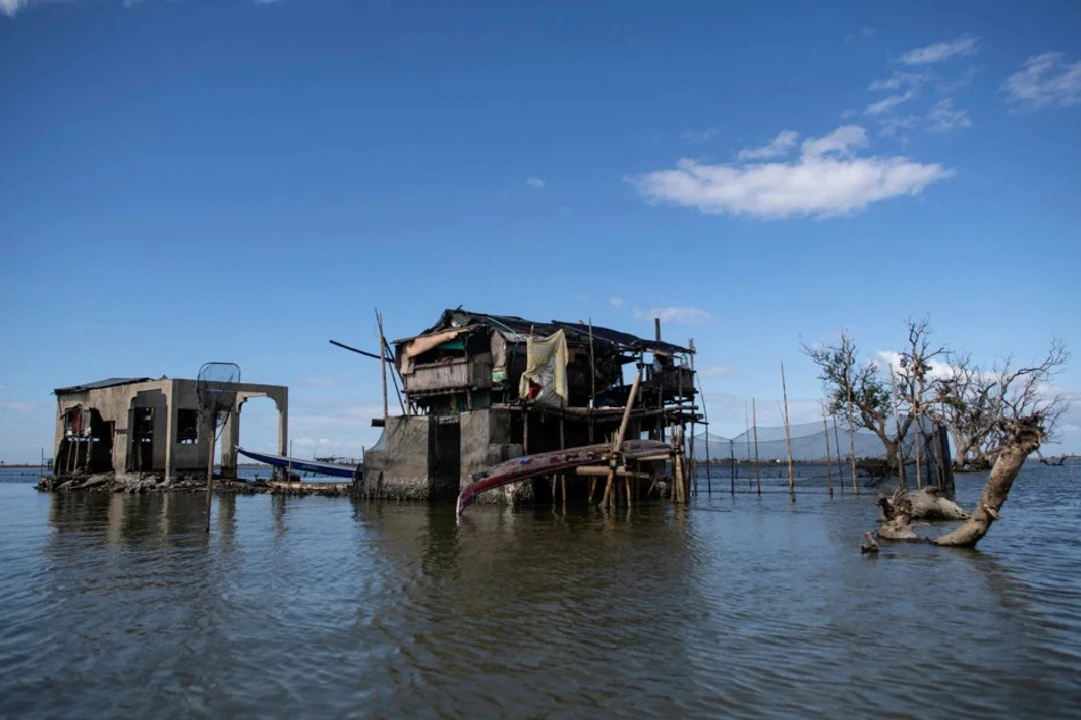May 28, 2023, Posted by: Kendall Harlow

Introduction: The Current State of Sea Level Rise in the Philippines
In recent years, the issue of sea level rise has been a topic of concern for many countries around the world, including the Philippines. As an archipelago made up of more than 7,000 islands, the Philippines is highly vulnerable to the impacts of sea level rise. This article will explore the current state of sea level rise in the Philippines and discuss various factors contributing to this environmental challenge. We will also delve into the potential consequences and explore possible solutions to address this pressing issue.
Understanding Sea Level Rise: Causes and Contributing Factors
Sea level rise is primarily caused by the melting of ice sheets and glaciers, as well as the thermal expansion of seawater due to rising temperatures. Climate change, driven by human activities such as the burning of fossil fuels and deforestation, is the main contributor to these factors. In the Philippines, local factors such as land subsidence and coastal development also play a role in exacerbating the impacts of sea level rise.
Climate Change: A Global Factor in Sea Level Rise
As global temperatures continue to rise due to climate change, the world's ice sheets and glaciers are melting at an alarming rate. This increase in meltwater contributes to the overall rise in sea levels. Additionally, as seawater warms, it expands, further contributing to the rise in sea levels. As a result, coastal areas like the Philippines are experiencing more frequent and severe flooding events, which can lead to devastating consequences for both the environment and local communities.
Land Subsidence: A Local Factor in the Philippines
Land subsidence, or the gradual sinking of the Earth's surface, is another factor contributing to the apparent rise in sea levels in the Philippines. This can be caused by a variety of factors, including excessive groundwater extraction, natural compaction of sediment, and tectonic activity. In the Philippines, land subsidence is particularly problematic in areas where groundwater extraction is common, as it can lead to a further increase in the risk of flooding and other coastal hazards.
Impacts of Sea Level Rise on the Philippine Environment and Communities
The rising sea levels pose significant threats to the Philippines' diverse ecosystems and the millions of people who depend on them. As sea levels continue to rise, coastal habitats such as mangroves, coral reefs, and seagrass beds are at risk of being inundated or destroyed, leading to a loss of biodiversity and vital ecosystem services. Additionally, coastal communities are becoming more vulnerable to flooding, erosion, and storm surges, which can have devastating impacts on livelihoods, infrastructure, and human safety.
Threats to Coastal Ecosystems and Biodiversity
Coastal ecosystems in the Philippines, such as mangroves and coral reefs, provide vital habitats for a diverse range of species and serve important ecological functions. Mangroves, for example, help to protect coastlines from erosion and storm surges, while coral reefs support an abundance of marine life and contribute to fisheries and tourism. However, sea level rise can lead to the inundation and eventual destruction of these habitats, resulting in the loss of biodiversity and the valuable ecosystem services they provide.
Increased Vulnerability of Coastal Communities
As sea levels rise, coastal communities in the Philippines are becoming more vulnerable to flooding, erosion, and storm surges. These hazards can lead to the displacement of people, loss of property and infrastructure, and negative impacts on livelihoods, particularly for those who depend on fisheries and coastal tourism. Furthermore, saltwater intrusion into freshwater resources can exacerbate water scarcity issues and affect agricultural productivity, compounding the challenges faced by these communities.
Adaptation and Mitigation Measures to Address Sea Level Rise in the Philippines
In order to address the challenges posed by sea level rise, the Philippines must implement a combination of adaptation and mitigation measures. Adaptation measures focus on reducing the vulnerability of coastal communities and ecosystems to the impacts of sea level rise, while mitigation measures aim to address the root causes of climate change by reducing greenhouse gas emissions.
Adaptation Measures: Building Resilience to Sea Level Rise
Some examples of adaptation measures that can be implemented in the Philippines include the restoration and conservation of coastal ecosystems, such as mangroves and coral reefs, which can help to protect coastlines from erosion and storm surges. Additionally, building resilient infrastructure, implementing early warning systems for coastal hazards, and promoting sustainable land use and coastal planning can help to reduce the vulnerability of communities to the impacts of sea level rise.
Mitigation Measures: Tackling the Root Causes of Climate Change
Addressing the root causes of climate change is essential for tackling sea level rise in the long term. This involves reducing greenhouse gas emissions by transitioning to renewable energy sources, improving energy efficiency, and promoting sustainable land use practices, such as reforestation and agroforestry. The Philippines has already made progress in this regard, with the government committing to reduce its greenhouse gas emissions by 75% by 2030 under the Paris Agreement. However, more ambitious action is needed to ensure a sustainable and resilient future for the Philippines and its coastal communities.
Conclusion: The Urgency of Addressing Sea Level Rise in the Philippines
The Philippines is facing significant challenges due to sea level rise, which pose a major threat to its environment, communities, and economy. Addressing this urgent issue requires a combination of adaptation and mitigation measures that not only protect the country's vulnerable coastal ecosystems and communities but also tackle the root causes of climate change. By taking ambitious action now, the Philippines can build a more resilient and sustainable future for generations to come.
Author
Kendall Harlow
I am an avid traveler, always looking for the next adventure. I enjoy exploring new cultures and learning about different ways of life. I'm never afraid to take a risk in order to experience something new.